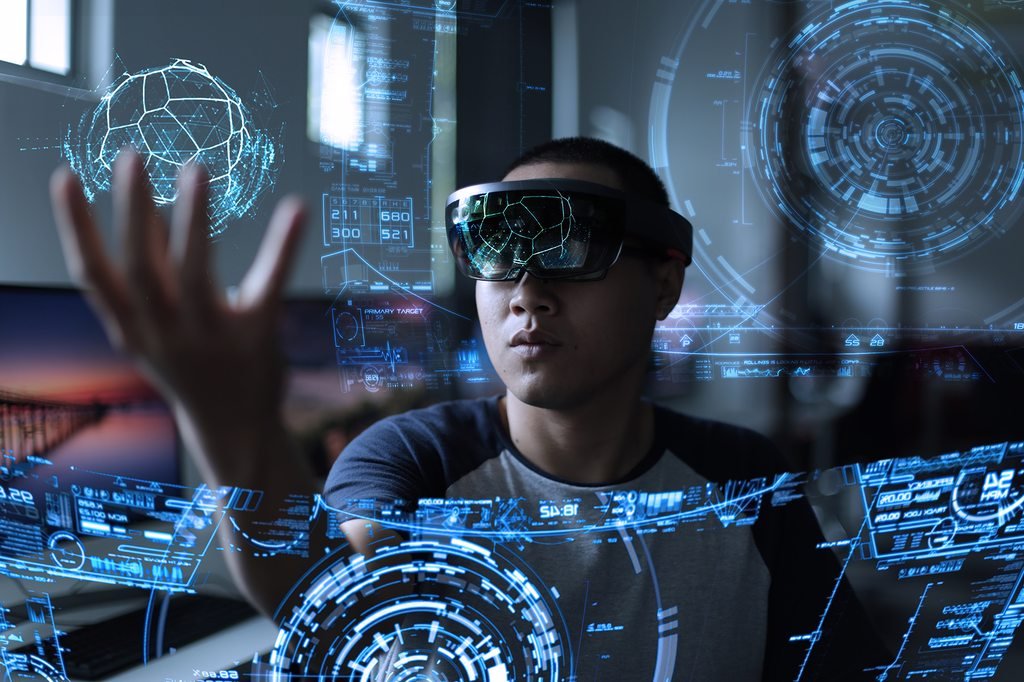The Virtual Frontier Is Now Real
Imagine holding a digital prototype of your next product in your hands before it’s even manufactured. Or walking a client through a new office design while you’re both in different countries. This isn’t science fiction, it’s the new reality powered by AR and VR.
With AI, modern software development, and application modernization accelerating digital transformation, Augmented Reality (AR) and Virtual Reality (VR) are no longer gimmicks they’re business essentials. From immersive customer experiences to remote collaboration and training, businesses worldwide are adopting these technologies to reduce costs, increase engagement, and gain a competitive edge.
What’s the Difference Between AR and VR?
Augmented Reality (AR) enhances the real world with digital overlays (e.g., filters, holograms, data).
Virtual Reality (VR) immerses users in a fully digital environment, replacing the real world.
Both are used in business but in different contexts. The magic happens when they’re combined with AI and modern software systems.
Why AR and VR Are Booming in Business
AR/VR Market Growth & Statistics
The global AR/VR market is projected to exceed $451 billion by 2030 (Statista).
75% of business leaders say they’re exploring AR/VR for employee training, product demos, or customer experience (PwC).
AR can increase online conversion rates by up to 90%, according to Shopify.
This explosive growth is tied to the rise of AI-powered solutions, cloud-native applications, and remote workforces, all of which demand modernized, flexible digital tools.
How AI Supercharges AR and VR
AI doesn’t just support AR/VR it amplifies their potential.
🤖 AI Capabilities in AR/VR:
Computer Vision: Powers object recognition in AR apps (e.g., IKEA Place)
Natural Language Processing (NLP): Enables voice-driven interactions in VR
Predictive Analytics: Personalizes AR/VR content based on user behavior
Generative AI: Creates lifelike virtual environments and avatars
Real-World Applications Across Industries
Healthcare: Precision and Empathy
AR surgery assistance tools help doctors visualize organs before incisions.
VR therapy is used to treat PTSD and phobias through controlled environments.
AI diagnostics are layered into AR for real-time insights during procedures.
“VR creates empathy-driven simulations for patients and caregivers alike.” — Harvard Business Review
Retail: Try Before You Buy
Sephora’s AR beauty app lets users try makeup virtually.
Lenskart and Warby Parker offer AR glasses fitting at home.
AI recommends products based on facial recognition and behavior.
Construction & Architecture: Visualize, Then Build
VR walkthroughs reduce client misunderstandings.
AR overlays on-site help workers align physical work with digital blueprints.
AI ensures compliance and detects risks in real-time.
Case Study: Gensler, a global design firm, reduced rework costs by 21% using AR-integrated project planning.
Education & Training: Learning by Doing
VR simulations train surgeons, pilots, and factory workers.
AR brings textbooks to life in real-time.
AI personalizes the learning path for each individual.
Remote Collaboration: New Dimensions of Teamwork
AR and VR are redefining hybrid and remote work.
Spatial computing tools like Microsoft Mesh allow for real-time collaboration in 3D.
AI-powered avatars replicate employee gestures and expressions.
No more Zoom fatigue now it’s immersive, human-centered interaction.
Application Modernization: The Foundation of AR/VR Readiness
You can’t integrate AR/VR into your business without modernizing legacy systems. Think of it like plugging a smart TV into a VHS player it just won’t work.
Key Areas of Application Modernization:
Cloud Migration: Run AR/VR apps on scalable infrastructure
API Integration: Connect AR/VR to your CRM, ERP, or LMS
Microservices Architecture: Modular software for rapid updates and scalability
DevOps Practices: Faster deployment, real-time updates, better QA
How to Get Started
If you are thinking about AR/VR for your business? Start with these steps:
1. Identify High-Impact Use Cases
Look at areas where customer interaction, training, or prototyping can be enhanced.
2. Modernize Your Infrastructure
Legacy systems won’t support real-time, immersive applications. Invest in software modernization and cloud-readiness.
3. Partner With Experts
Choose partners experienced in AI, AR/VR, and digital transformation (👋 hello, PROSIGNS).
4. Start Small, Scale Smart
Begin with a pilot such as a VR training module or AR-based product catalog and expand based on ROI.
5. Leverage Data & Feedback
Use analytics and AI to track effectiveness, personalize experiences, and continuously improve.
The Future of Business Is Immersive, Intelligent, and Immediate
As AI, application modernization, and software development continue to evolve, AR and VR are becoming critical tools in the digital transformation playbook.
Whether you’re in retail, healthcare, education, construction, or finance, immersive tech is no longer optional it’s a competitive necessity.
“Businesses that adopt immersive technologies early will be the ones shaping market expectations—not just meeting them.” — McKinsey & Company
Ready to Build the Future?
Augmented and Virtual Reality are no longer buzzwords they’re business tools. When powered by AI and embedded in a modernized tech ecosystem, they unlock experiences that were once impossible.
Curious About AI's Broader Impact?
As businesses race to adopt immersive tech powered by artificial intelligence, it’s worth asking: Is AI automation truly a blessing or a curse? Dive deeper into the ethical, practical, and strategic sides of AI in our latest blog:
👉 AI Automation: A Blessing or a Curse?




